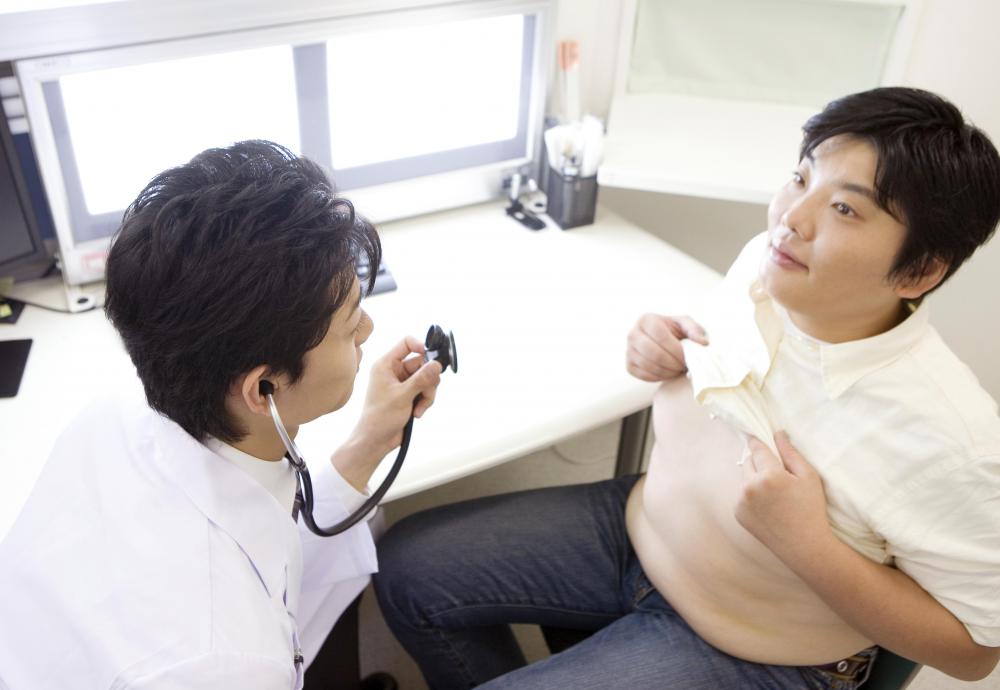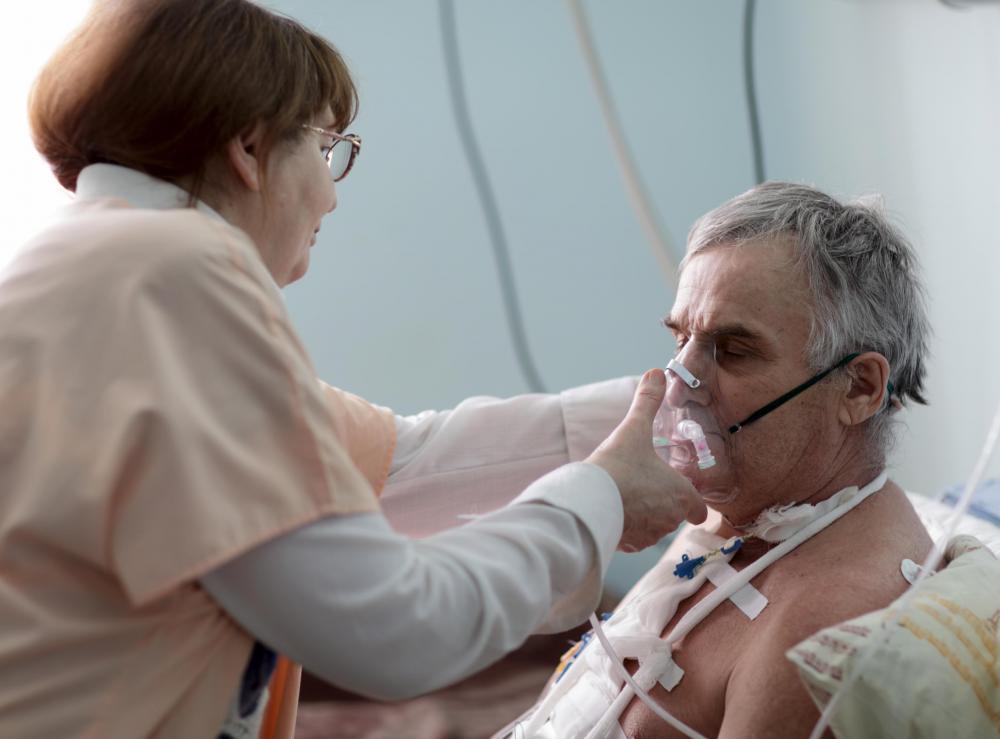At TheHealthBoard, we're committed to delivering accurate, trustworthy information. Our expert-authored content is rigorously fact-checked and sourced from credible authorities. Discover how we uphold the highest standards in providing you with reliable knowledge.
What Is the Function of the Bicuspid Valve?
In humans, the bicuspid valve, more commonly referred to as the mitral valve, is one of four valves inside the heart. Specifically, the function of the bicuspid valve is to control the flow of blood in one direction through the left side of the heart, especially in regards to preventing any blood from regurgitating back into the lungs. Leaflets or flaps within the valve remain closed while the left atrium fills with oxygen-enriched blood from the lungs. Pressure from the inflow of blood into the left atrium increases, causing muscles to contract and the bicuspid valve to open, allowing blood to flow down into the left ventricle. Once the left ventricle is full, but before it contracts, the bicuspid or mitral valve closes to prevent a backflow of blood.
To fully understand the function of the bicuspid valve, it is necessary to understand that the human heart has four chambers, including a left and right atrium at the top, and a left and right ventricle at the bottom. Each chamber has a valve that controls the inflow or output of blood to the rest of the body. Blood from the body's circulatory system flows into the right atrium, whereas blood from the lungs flows into the left atrium. As blood flows in, pressure in the upper chambers increases, triggering contractions which cause valves to open and drain the blood into lower chambers. Lower left and right ventricles then pump blood back out to the circulatory system by contracting while valves are closed.

Of the four heart valves, only the bicuspid or mitral valve has two leaflets. All other valves, including the tricuspid valve, pulmonary valve, and aortic valve have three leaflets. Contractions in the muscles of the heart facilitate valve operation by pushing leaflets open or pulling them closed, similar to how a balloon expands when squeezed. Valves work in conjunction, much like the pistons in an automobile engine, operating on precision timing. Any disruption or malfunction of other valves or heart muscles can potentially disrupt the normal function of the bicuspid valve.

Two heart conditions exist that involve a malfunction in valve operation. Stenosis occurs when valves stiffen or narrow, causing the heart to push with more force to get blood through the valve. Regurgitation, on the other hand, results when valve leaflets are too loose or do not properly close and allow blood to flow backward through the valve. When blood regurgitates from the bicuspid valve into the lungs, shortness of breath, rapid heart rate, and chest pain occurs.

Mitral valve prolapse is a common, often inherited heart condition that affects the function of the bicuspid valve, possibly leading to mitral valve regurgitation later in life. During prolapse, the leaflets of the bicuspid valve balloon upward into the left atrium. Most often, prolapse results in only a harmless ticking sound. Over time and as a result of the aging process, leaflets or the entire mitral valve can wear out, leading to regurgitation severe enough to require surgical repair or replacement to restore the the bicuspid valve to proper functioning.
AS FEATURED ON:
AS FEATURED ON:














Discussion Comments
The heart is such a complex and fascinating organ, with all of its valves and chambers. They all work together in an almost miraculous fashion to sustain life. Reading this article makes one realize why it is important to take care of your health to keep your heart strong.
Post your comments